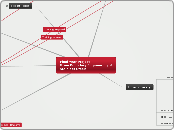Final Year Project
Grain Boundary Engineering of Stainless Steels
Sample Preparation
10% oxalic acid etch
ASTM A262 practice A
Heat Treaments
(1) no heat treatment (5% CW only)
(2) 1100C / 5 min.
(3) 1100C / 30 min.
(4) 1100C / 180 min.
(5) 1050C / 30 min.
(6) 1050C / 180 min.
(7) 950C / 180 min.
(8) 950C / 1440 min.
(9) 900C / 1440 min.
(10) 850C / 1440 min.
Sectioning
Health and Safety
Testing
Mechanical Properties Testing
Microhardness
Compressive Strength
Corrosion Testing
pH-modified tetrathionate solution (K2S4O6)
Report Topics
Conlcusions
Results and Analysis
Experiemental Proceedures
Literature Survey
Grain Characterisation
Stainless Steels
Corrosion Resistance
Introduction
Grain Boundary Engineering
Literature survey
Surface effects
EBSD - microstructure development with depth from rolling
Effect of straining - 5%CW
Grain Boundaries
Brandon Criteria can theoretically predict GB misorientations
Special Boundaries - Sigma (fit)
Fit (sigma value)
determines degree of order
Grain Boundary Character Distribution
High Order Twin Boundaries
Twin Boundaries
Low Angle/High Angle GB
Coincident Site Lattice (CSL)
See Dr Mcleans structural materials book.
depending on misorientation angle - can predict grain boundary structure (wanatabe lecture)
Analyses
Image Processesing
using ASTM standard
modifying with matlab
EBSD
White Light Interferometry
SEM Examination
Grain Count
ASTM E112 - 96

